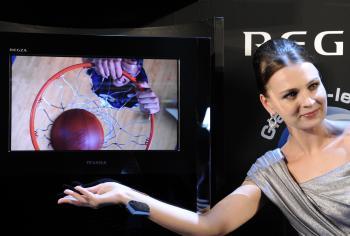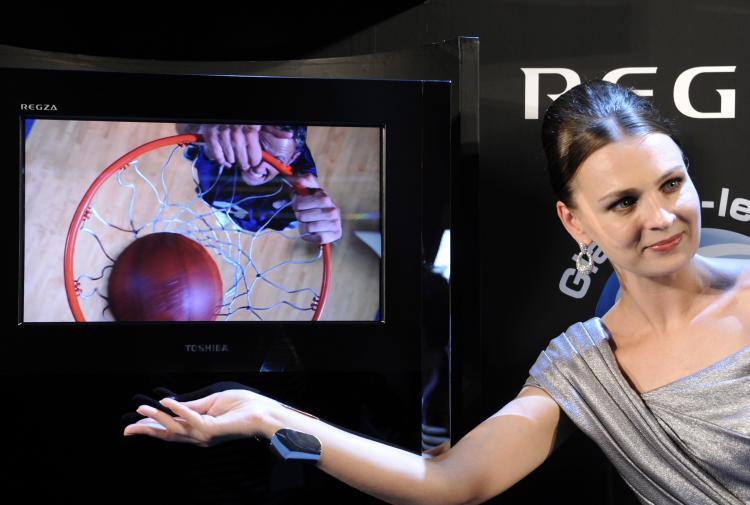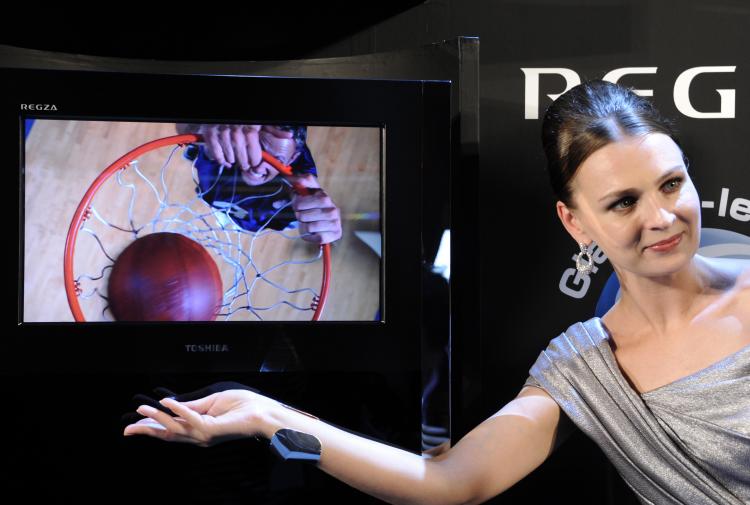Since the day they were launched, 3-D televisions have used what is called active shutter technology, which allows them to display 3-D images. It was not until recently that other technologies began to emerge.
Each of the methods for displaying 3-D images has its own advantages and disadvantages, so understanding the technology behind each method is key in choosing which 3-D TV works best for you.
The active shutter glasses method works by showing different images meant for each eye and alternating this to create a 3-D image effect. To achieve this, the TV will sequentially display images meant for each eye at a very high frequency.
At the same time, it will send a signal to the viewer’s active shutter 3-D glasses that will open and close its lenses accordingly. This makes sure that each eye only sees the images intended for it to see, which will create the 3-D effect.
The main advantage of this technology is its capability of displaying 3-D in high-definition (HD), and with a very large field of view.
The drawback of this is that it requires users to use expensive, battery-operated glasses that are larger and heavier than conventional prescription glasses. Since the active shutter glasses need to dim each lens rapidly so as to block out images meant for the other eye, viewers will experience loss of brightness and lights in in their field of view will appear to flicker.
Also, when the glasses do not align perfectly with the TV in displaying sequential images, wrong images will be displayed to the wrong eye which results in what’s called the “ghosting effect.”
This technology has been given time to mature, however, and manufacturers like Sony are already finding ways to negate the unwanted side effects.
The passive glasses method work similarly to active shutter glasses—where they display different images meant for each eye—yet the television displays both images simultaneously on the screen and uses passive light polarization to send images to their intended eye.
This works by displaying images meant for each eye on alternate horizontal lines of the TV display and using a film patterned retarder (FDR) on the screen to convert the light from each line to either the left or right side. Using this method, simple polarized glasses can be used to filter the images properly to the left and right eyes.
The main benefit of this technology is that it uses less expensive, lighter, and smaller glasses than the active shutter method. It also fixes the light flickering, ghosting, and loss of brightness inherent in active shutter 3-D televisions.
The major downside is loss of resolution since each horizontal line on the screen is dedicated to a different eye.
Since our eyes are set at different positions that give different viewing angles, 3-D images can be achieved without glasses. Parallax barrier technology works by having a layer of material on the TV screen that has a series of precision slits. These allow each eye to see a different set of pixels that create a sense of 3-D.
This technology has the obvious advantage of not requiring 3-D glasses. The downside is that the 3-D effect can only be seen in a few set viewing locations from the television, which make it unsuitable for some domestic settings.
Each of the methods for displaying 3-D images has its own advantages and disadvantages, so understanding the technology behind each method is key in choosing which 3-D TV works best for you.
Active Shutter Glasses
The active shutter glasses method works by showing different images meant for each eye and alternating this to create a 3-D image effect. To achieve this, the TV will sequentially display images meant for each eye at a very high frequency.
At the same time, it will send a signal to the viewer’s active shutter 3-D glasses that will open and close its lenses accordingly. This makes sure that each eye only sees the images intended for it to see, which will create the 3-D effect.
The main advantage of this technology is its capability of displaying 3-D in high-definition (HD), and with a very large field of view.
The drawback of this is that it requires users to use expensive, battery-operated glasses that are larger and heavier than conventional prescription glasses. Since the active shutter glasses need to dim each lens rapidly so as to block out images meant for the other eye, viewers will experience loss of brightness and lights in in their field of view will appear to flicker.
Also, when the glasses do not align perfectly with the TV in displaying sequential images, wrong images will be displayed to the wrong eye which results in what’s called the “ghosting effect.”
This technology has been given time to mature, however, and manufacturers like Sony are already finding ways to negate the unwanted side effects.
Passive Glasses
The passive glasses method work similarly to active shutter glasses—where they display different images meant for each eye—yet the television displays both images simultaneously on the screen and uses passive light polarization to send images to their intended eye.
This works by displaying images meant for each eye on alternate horizontal lines of the TV display and using a film patterned retarder (FDR) on the screen to convert the light from each line to either the left or right side. Using this method, simple polarized glasses can be used to filter the images properly to the left and right eyes.
The main benefit of this technology is that it uses less expensive, lighter, and smaller glasses than the active shutter method. It also fixes the light flickering, ghosting, and loss of brightness inherent in active shutter 3-D televisions.
The major downside is loss of resolution since each horizontal line on the screen is dedicated to a different eye.
Glasses Free
Since our eyes are set at different positions that give different viewing angles, 3-D images can be achieved without glasses. Parallax barrier technology works by having a layer of material on the TV screen that has a series of precision slits. These allow each eye to see a different set of pixels that create a sense of 3-D.
This technology has the obvious advantage of not requiring 3-D glasses. The downside is that the 3-D effect can only be seen in a few set viewing locations from the television, which make it unsuitable for some domestic settings.






